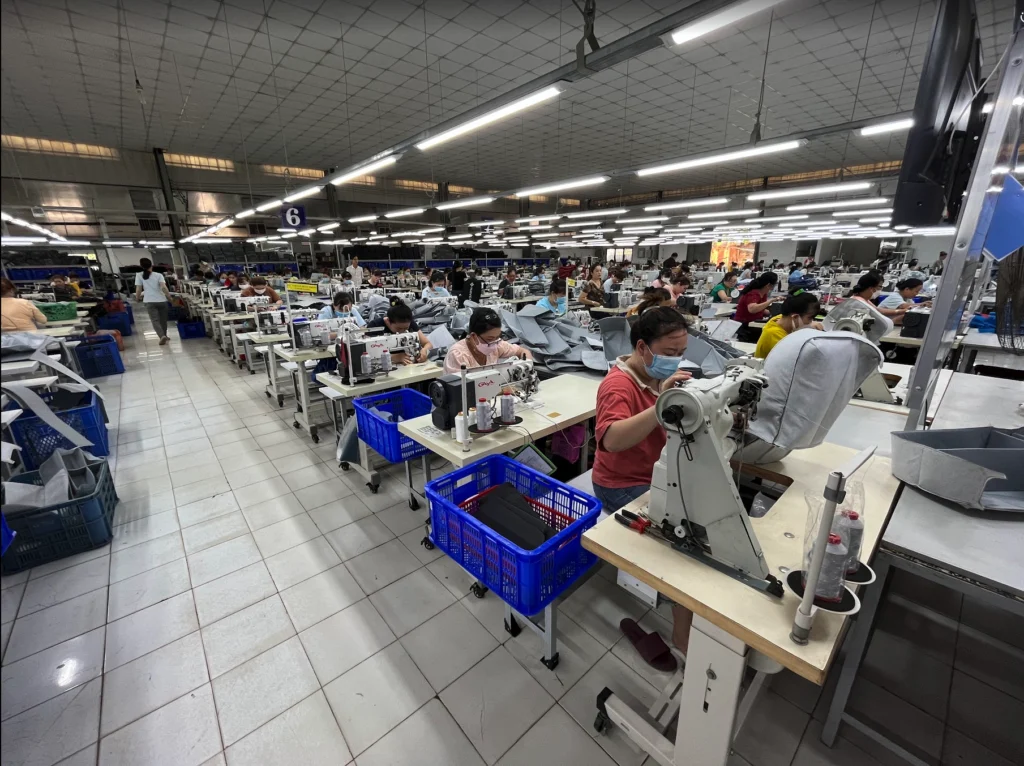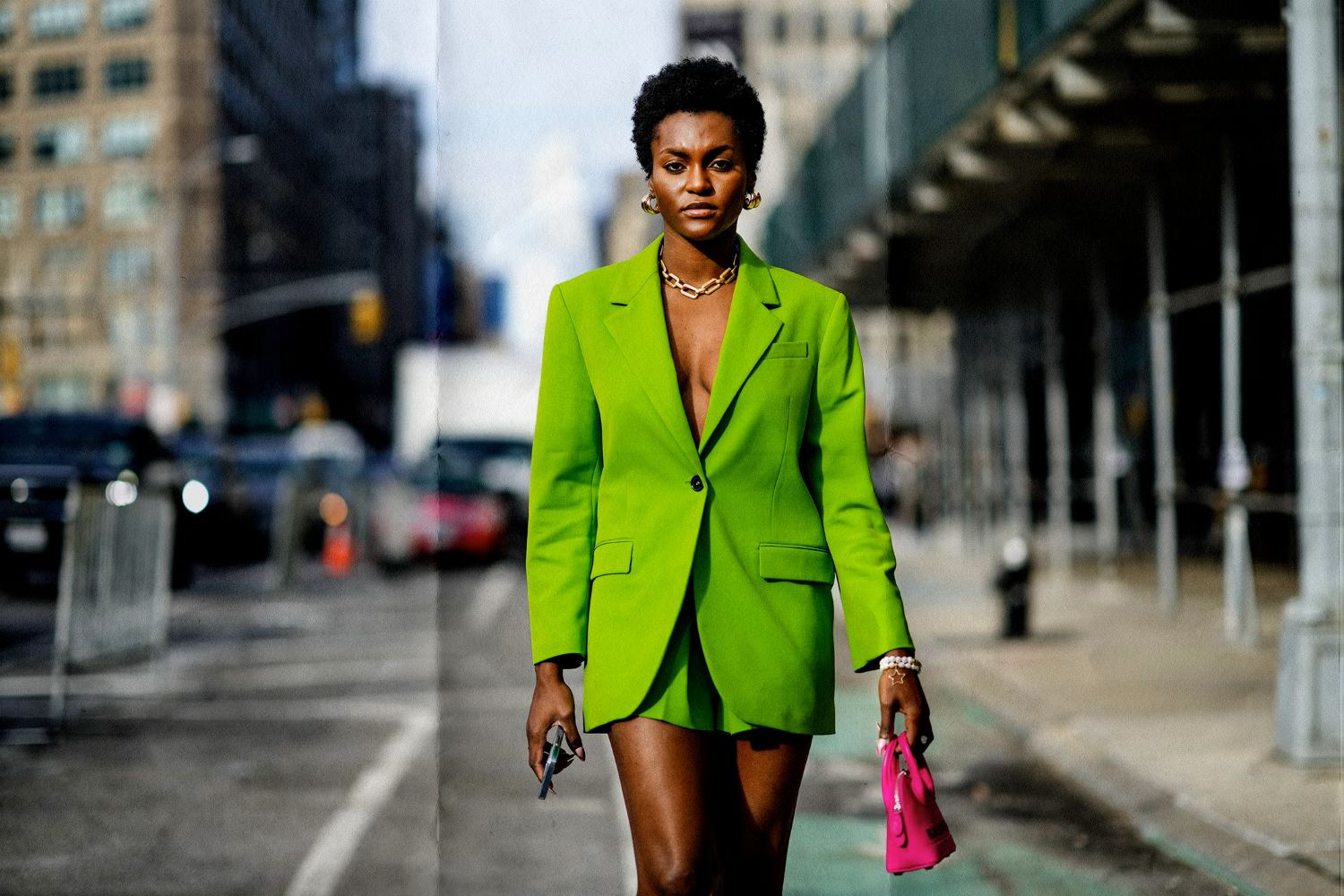2026 isn’t just another year on fashion’s sustainability calendar — it’s the year the industry finally began to mean what it said. After half a decade of buzzwords and performative green campaigns, consumers have grown immune to eco-slogans printed on polyester tees. They want action, not aspiration. The shift is palpable — from glossy “conscious” collections to genuine circular ecosystems, where garments are designed to return, regenerate, and reemerge in new forms.
The cultural mood has evolved. What was once seen as “eco-niche” is now social currency. Wearing something pre-loved no longer signals frugality; it signals intelligence. It tells a story of someone who understands value beyond price tags. On TikTok and Reddit, the once-ironic hashtag #rewearproud has exploded into a full-blown community where people boast about wearing a jacket from 2012 that still fits both body and conscience.
Behind this emotional shift lies fatigue — fatigue with throwaway culture and overconsumption. By 2025, the average person owned 60% more clothes than in 2000 but wore each piece half as often. The aftermath was predictable: mountains of waste, overflowing landfills, and broken trust between consumers and brands. So when new generations demanded authenticity, the industry faced a choice — evolve or be exiled. The answer came in the form of circular fashion: a system where clothes are created, worn, repaired, resold, and remade — all within one continuous loop.
For brands, circularity is no longer a marketing add-on; it’s a business survival plan. Patagonia’s lifetime repair guarantee, Eileen Fisher’s “Renew” collection, and Stella McCartney’s ongoing collaboration with textile recycling pioneers like Infinited Fiber Company have set new benchmarks. Even fast-fashion giants, under pressure, are reengineering their supply chains — not just to reuse fabrics but to regain consumer trust.
Yet, this revolution isn’t purely technical. It’s emotional. Consumers are rediscovering the intimacy of clothing — the sense of attachment that comes from wearing something with history. In a world obsessed with the new, circular fashion feels quietly radical. It’s not about nostalgia for vintage; it’s about responsibility wrapped in style. People are realizing that when a brand invites them to repair, resell, or return, it’s not an inconvenience — it’s inclusion in a larger purpose.
2026 marks a convergence — technology, creativity, and conscience aligning into a shared rhythm. Textile recycling labs are scaling globally; AI now predicts garment lifecycles; and take-back programs have become as normal as seasonal sales. But beneath all the innovation lies something deeply human — a return to care. Care for our clothes, for craftsmanship, and for the invisible hands that make them.
Fashion, for the first time in decades, feels like it’s coming full circle — not racing forward in a blur of trends, but rotating gently, deliberately, toward meaning.
The Emotional Power of Reuse – Why We Now Feel Proud to Rewear
A decade ago, rewearing the same outfit twice on social media could earn a side-eye or a snide comment. In 2026, it earns admiration. The psychology of fashion has turned upside down — repetition now reads as confidence, not lack of imagination. Across Reddit’s r/SustainableFashion threads and TikTok’s “capsule wardrobe” reels, people share photos of the same denim jacket or black dress styled a dozen ways, captioned with pride: “Still going strong since 2018.”
This pride stems from a quiet rebellion against the culture of disposability. After years of chasing micro-trends and influencer hauls, consumers are tired of feeling complicit in waste. Reuse has become a form of emotional cleansing — a way to reclaim control from algorithms and overproduction. On fashion forums, users speak of “detoxing” their closets the way one might detox their mind. One comment that went viral in 2025 captured the sentiment: “Every time I mend something instead of replacing it, I feel like I’m undoing a little bit of the damage we’ve done.”
The rise of rewear culture is also deeply personal. Clothes that last become extensions of memory — a coat that’s seen every winter, jeans shaped by time and experience. In this new emotional economy, patina is prestige. Luxury is no longer defined by scarcity or logos but by longevity and story. It’s why pre-owned marketplaces like Vestiaire Collective and The RealReal are thriving, not as thrift alternatives but as status spaces. A “worn-again” item now carries social weight precisely because it resists excess.
Brands have tapped into this emotional resonance with remarkable sensitivity. Eileen Fisher’s customers proudly tag themselves wearing garments repaired through the brand’s Renew program, while Levi’s SecondHand runs campaigns celebrating “denim with a past.” Even high-street players like COS Resell and Arket Re-wear have adopted storytelling tones once reserved for artisanal luxury. The message is simple: love what lasts.
But the emotional pull of reuse goes deeper than sustainability, it speaks to belonging. When someone buys a refurbished jacket or donates their old dress to a brand’s remake line, they’re joining a loop — a quiet community of caretakers. There’s a sense of intimacy in knowing your old jeans might become part of someone else’s favorite outfit. This interconnectedness has redefined fashion’s social fabric from competition to collaboration.
Psychologists note that rewearing familiar items can even reduce decision fatigue and enhance well-being. The uniform dressing trend — from Steve Jobs’ turtlenecks to the modern minimalist’s capsule closet — reflects a craving for emotional stability in chaotic times. Circular fashion satisfies this need beautifully: it offers both simplicity and significance.
In 2026, to rewear is to reimagine. Each stitch repaired, each garment passed on, carries quiet defiance against the disposable. And as millions of consumers share their “before and after” transformations — not of their clothes, but of their mindset — a new kind of luxury is emerging: emotional durability.
Inside the Circular Economy – The New Fashion Supply Chain
For decades, fashion’s journey was heartbreakingly linear: extract, produce, consume, discard. The system thrived on speed, not sense — until the damage could no longer be hidden under glossy campaigns. By 2026, that old model feels like a relic. The conversation has shifted from sustainable materials to sustainable systems. Circular fashion is no longer a futuristic ideal; it’s an operational necessity.
At its heart, the circular economy in fashion is about designing for return — garments built not just for the first owner, but for the next. Instead of the take-make-waste cycle, the new supply chain runs on the 4Rs: Repair, Resell, Recycle, Recreate. Each stage forms a closed loop where value circulates, rather than leaks. It begins with designers creating modular clothing that can be disassembled or refreshed with minimal waste. Then comes reuse — resale platforms, rental services, and repair programs extending each item’s life. When wear finally ends, recycling steps in: fibers are regenerated, fabrics are remade, and the process begins again.
The most radical shift has happened behind the scenes — in the invisible infrastructure of how clothes are tracked and processed. Blockchain-based tracing now records the full material history of a garment, from the source of its cotton to the recycling facility that may handle it years later. European startups like Eon and Retraced have developed “digital product passports” embedded in clothing labels, allowing consumers to scan and see exactly how a garment was made, used, and renewed. Transparency, once an optional virtue, is becoming a global standard.
Brands are also rethinking ownership itself. Rental ecosystems have matured beyond red-carpet gowns to include everyday wear. In the US, Nuuly and Rent the Runway now operate like fashion libraries, with seamless logistics for repair, cleaning, and reuse. In Europe, Vigga and MUD Jeans have pioneered subscription-based clothing — pay-per-wear models where customers lease items, then return them for recycling. This isn’t anti-consumption; it’s post-consumption — where access replaces accumulation.
The circular economy has also redefined the factory floor. Textile mills are no longer just manufacturers but participants in a regenerative chain. In Bangladesh and Vietnam, fabric waste is collected directly from production lines, separated by fiber type, and reprocessed into new yarns on-site — a practice that’s quietly transforming waste into resource. Meanwhile, AI-driven sorting centers across China and Scandinavia can now identify fiber blends in seconds, making large-scale recycling not just possible but profitable.
However, the beauty of circularity isn’t only in its efficiency — it’s in its empathy. When a consumer sends back an old coat and later sees the brand release a “reborn” collection featuring recycled versions of it, there’s an emotional loop completed too. It reminds us that fashion, at its core, is a relationship — between maker and wearer, past and future.
Circular fashion doesn’t end when the product’s life does; it begins again. The supply chain of 2026 isn’t a line — it’s a circle of care, proving that progress doesn’t have to mean waste.
The 2026 Pioneers – Brands Defining the Future of Circularity
Every revolution needs its trailblazers — those who dare to make change tangible before it becomes mainstream. In 2026, the pioneers of circular fashion are no longer niche disruptors; they’re the new benchmarks of integrity. Each one represents a different face of the same movement: fashion designed not for profit’s next quarter, but for the planet’s next century.
Patagonia – The Original Circle of Trust

Patagonia remains the moral compass of the industry. Long before sustainability became a buzzword, it was embedding repairability and purpose into every thread. In 2026, its Worn Wear program has become a global ecosystem — not just reselling old garments but reimagining them. Customers can trade in used jackets for credit, and Patagonia’s repair teams in Reno, Amsterdam, and Tokyo mend and remaster these items into limited “Recrafted” collections. The emotional hook is powerful: every item comes with a story tag, sharing where it’s been and who wore it. On Reddit and TikTok, these tags have become symbols of authenticity — proof that ethical production isn’t just possible; it’s personal.
Stella McCartney – Luxury Without Waste

Stella McCartney continues to lead the high-fashion conversation around circular luxury. In partnership with Econyl and Infinited Fiber Company, her 2026 collections now feature regenerated fibers that retain the luster of virgin materials without environmental compromise. McCartney’s new Circular by Design initiative pushes luxury houses to adopt closed-loop production using mono-materials — fabrics made entirely from one fiber, ensuring recyclability. More importantly, she’s changed the emotional language of eco-luxury. Wearing a Stella piece isn’t about guilt-free indulgence anymore; it’s about conscious confidence — the idea that beauty and ethics can coexist effortlessly.
Eileen Fisher – The Quiet Revolution

Eileen Fisher’s Renew program has evolved into a model of minimalist circularity. The brand now operates local refurbishing studios in major cities, where gently used garments are cleaned, repaired, and resold — each labeled “Reborn.” In 2026, Fisher expanded this into a mentorship program for smaller designers, teaching circular manufacturing methods. The emotional tone is intimate and restorative — as one customer wrote on a Vogue community thread, “My Renew jacket feels like wearing the brand’s promise.”
COS and H&M Rewear – Circularity for the Mass Market

Even the fast-fashion sector is evolving — or at least trying to. In 2026, H&M’s Rewear platform has expanded globally, offering resale, rental, and in-store repair across 40 countries. Though critics remain cautious, there’s measurable progress: a 30% increase in take-back participation and partnerships with fiber recycling innovators like Renewcell. COS, H&M’s upscale sibling, has leaned even harder into circular minimalism, releasing “Designed for Life” capsules made entirely from recycled or traceable materials. Their approach resonates with younger professionals who crave simplicity without moral compromise.
The North Face Renewed – Adventure with a Second Life

The North Face’s Renewed program has tapped into the emotional heart of outdoor culture — resilience and reuse. Its reconditioned jackets, refurbished tents, and repaired backpacks are sold with the tagline “Repaired, Restored, Re-Ready.” The initiative now includes an AI-assisted repair tracker that documents every fix, giving each item a “journey card.” For outdoor enthusiasts, this creates a sense of pride — as if their gear carries battle scars worth celebrating.
These pioneers share more than sustainability practices — they share transparency, durability, and an understanding that emotional connection is the new currency of loyalty. Their innovation lies not just in materials, but in mindset: a refusal to see the end of a garment’s life as loss.
As consumers, we no longer buy brands — we buy beliefs stitched into fabric. And these pioneers have proven something profound: when you give fashion a second life, you also give it back its soul.
Tech-Driven Sustainability – How AI and Recycling Labs Are Transforming Textiles

If 2020s fashion had a slogan, it would be “less talk, more tech.” In 2026, the real heroes of circular fashion aren’t just designers with vision boards — they’re scientists, coders, and engineers quietly rebuilding the material DNA of the industry. Behind every recycled shirt or regenerated dress is a lab humming with algorithms, AI sensors, and fiber reactors turning yesterday’s waste into tomorrow’s wardrobe.
AI: The Invisible Seamstress
Artificial intelligence has become fashion’s most efficient tailor. Once dismissed as a novelty, AI is now embedded across the circular chain — from fiber sorting to life-cycle prediction. In China’s textile hubs, automated systems scan mountains of discarded clothing, instantly identifying fabric type, color, and contamination level with 99% accuracy. What once required human labor and guesswork now happens in seconds.
In the US, startups like Ambercycle use machine learning to analyze textile waste composition, guiding chemical recycling processes with surgical precision. Meanwhile, Circular.Fashion in Germany employs AI to design “digital twins” of garments — virtual models that simulate wear, washing, and aging patterns before a single stitch is made. The result: fewer samples, less waste, and garments optimized for longevity.
AI also helps brands predict returns and repairs. By 2026, major retailers feed wear-and-tear data from smart washing machines and wearable sensors back into product design, letting them tweak fabrics before failure occurs. The result isn’t just efficiency — it’s empathy encoded in code: technology learning to care for the clothes we care about.
Recycling Labs: Where Waste Becomes Wonder
Technology’s heartbeat, however, lies in the new generation of recycling labs. The pioneers — Renewcell (Sweden), Circ (US), Infinited Fiber Company (Finland), and Worn Again Technologies (UK) — have turned fiber regeneration into an art form. Renewcell’s “Circulose” pulp, made from old cotton garments, is now being used by H&M, Levi’s, and Zara to create fresh denim and jersey fabrics. Circ’s hydrothermal technology can separate polyester-cotton blends — the Holy Grail of recycling — producing pure fibers ready for remanufacture.
In Asia, the momentum is just as fierce. Chinese innovators in Guangzhou and Suzhou are developing enzymatic recycling methods that dissolve textiles without harsh chemicals, while AI-integrated plants in Shenzhen track fiber flows with blockchain certification. Japan’s JEPLAN continues refining its “chemical resurrection” of PET fabrics, ensuring that one T-shirt can live five lives without degradation. Together, these hubs are making circularity scalable — not just symbolic.
The Human Side of Innovation
What’s most striking is how technology, once blamed for fast fashion’s acceleration, is now its redemption arc. Automation no longer means dehumanization; it’s enabling artisans and small brands to operate more responsibly. In London and Milan, 3D-knitting machines allow made-to-order production, eliminating overstock. In Dhaka, digital repair platforms connect tailors directly to global customers seeking mending services — a digital handshake between technology and tradition.
As one Reddit user put it in a 2026 thread on textile tech: “It’s wild that my old hoodie and AI are now in the same sentence — but somehow, it makes sense.” That comment captures the spirit of this moment — technology not replacing craftsmanship but restoring purpose to it.
Beyond the Lab: A New Material Imagination
The final frontier is bio-innovation. Lab-grown leather from Mylo and VitroLabs, mushroom-based suede, and seaweed silk are entering mainstream production. By merging biotechnology with recycling, the industry is learning to mimic nature’s efficiency — nothing wasted, everything renewed.
The future of fashion may hum in server rooms and shimmer in fiber reactors, but its soul still belongs to the same place: the human desire to make, repair, and remember. In 2026, technology isn’t just powering circular fashion — it’s giving it rhythm, heartbeat, and hope.
Affordable Circular Fashion – Making Sustainability Mainstream

One of the biggest myths that haunted sustainability for years was that “eco” meant expensive. But by 2026, that narrative has unraveled. Circular fashion has broken out of its luxury niche and entered the wardrobes of ordinary people — students, parents, professionals — who want to do the right thing without breaking the bank. What once cost more now simply costs differently; the value has shifted from price tag to lifespan.
The new generation of affordable circular brands has made sustainability feel practical, even joyful. Labels like For Days, Rapanui, Pangaia, and Beyond Retro are leading this democratization. Their message isn’t about sacrifice — it’s about smart living.
For Days, a U.S.-based startup, pioneered the “Take Back Bag” model: customers send in old clothes (from any brand), receive store credit, and know that every fiber will be reused. It’s a small act that feels satisfying — a mail-in ritual of accountability. Their membership model turns recycling into a subscription for good habits.
In the UK, Rapanui has quietly built one of the most transparent supply chains in the world. Every garment is made in a renewable-energy-powered factory on the Isle of Wight and printed on demand, ensuring zero waste. Their Teemill platform now empowers hundreds of small independent creators to launch circular apparel lines — proving that circularity can scale creatively. A user on Reddit recently wrote, “I bought one Rapanui hoodie three years ago, and it still feels new. I’ve stopped impulse shopping entirely.” That’s the kind of consumer transformation big brands dream about but can’t fake.
Then there’s Pangaia, the colorful, material-obsessed innovator that’s turned science into streetwear. Their seaweed fibers, recycled cottons, and natural dyes once catered to eco-conscious influencers; now they appear in mainstream retailers. What makes Pangaia unique is its emotional branding — sustainability that feels aspirational, not academic. Wearing it says: I care, but I also have style.
Beyond Retro, Europe’s iconic vintage retailer, has evolved into a hybrid model of resale and design revival. Their “Reworked” line takes unsellable thrift garments and remakes them into fresh, modern silhouettes. In a world fatigued by sameness, that kind of creative reinvention resonates. One TikTok creator summed it up perfectly: “Beyond Retro makes me feel like I’m wearing the past, but walking into the future.”
Even high-street names are catching up. Zara Pre-Owned, Levi’s SecondHand, and H&M Move now offer repair kits, buy-back programs, and clothing made from regenerated fibers. Prices have narrowed, proving that sustainability and affordability are not opposites — they’re the same conversation at different scales.
The emotional truth of 2026 is simple: people no longer buy sustainability to signal virtue; they buy it because it lasts, fits their budget, and feels right. Circular fashion has entered the everyday — not as luxury, but as logic. And once something becomes logical in fashion, it’s unstoppable.
Asia’s Circular Powerhouses – From Tradition to Technology

While Europe and the U.S. often dominate sustainability headlines, the quiet revolution of circular fashion is being written across Asia — in textile villages, tech labs, and family workshops that never stopped believing in repair, reuse, and renewal. In 2026, Asia isn’t just following the circular movement; it’s redefining it by merging ancient craft traditions with cutting-edge material science.
China: The Engine of Scalable Circularity
China’s role in the fashion ecosystem has shifted dramatically — from mass production to mass regeneration. In the industrial heartlands of Guangzhou and Suzhou, factories once criticized for waste are now piloting fiber regeneration technologies at astonishing scale. The Green Fiber City initiative, launched in 2024, has matured into a national network of AI-powered textile recycling centers. Each facility identifies and sorts millions of garments daily, converting polyester blends into virgin-quality fibers through closed-loop chemical processes.
Brands like Icicle and ERDOS Group have embraced full traceability, combining blockchain and QR-embedded labels that let buyers track every stage of a garment’s life. Meanwhile, upcycling designers such as ANGEL CHEN and Pronounce are turning production offcuts into couture-level collections. Their approach reflects a growing Chinese aesthetic of shou jiu (守旧) — cherishing the old while reimagining it for the new.
India: The Craft Revivalists
In India, circular fashion doesn’t feel like an innovation — it feels like memory. For centuries, repair and reuse have been woven into daily life: saris passed down through generations, fabric scraps transformed into kantha quilts, tailors mending everything from denim to silk. What’s changed in 2026 is scale.
Brands like Doodlage, Upasana, and The Summer House are leading an “ethical renaissance” by combining upcycled textiles with fair trade production. Doodlage in particular has turned factory waste into runway-ready patchwork — every garment is unique, carrying visible stitches as symbols of transparency. India’s massive thrift movement, fueled by Gen Z consumers on Instagram and platforms like Elanic and Zolostays, has reframed pre-loved clothing as “heritage chic.”
As one Mumbai-based fashion blogger wrote, “Our grandmothers were circular before it had a name.” That intergenerational pride has become India’s emotional edge in global sustainability.
South Korea & Japan: Cultural Minimalism Meets High Tech
In Seoul and Tokyo, circularity fuses technology with philosophy. Korean labels like Re;code and WWAVE are transforming deadstock military uniforms and old denim into avant-garde streetwear, while Japan’s JEPLAN continues to refine chemical recycling through its BRING program — collecting used polyester clothing and turning it into new fibers indistinguishable from virgin material.
But beyond technology lies something deeper — a cultural respect for imperfection. Japan’s philosophy of mottainai (“what a waste”) and kintsugi (the art of mending broken pottery with gold) resonate strongly with the 2026 consumer psyche. Circular fashion here isn’t a marketing strategy; it’s a moral rhythm.
Across Asia, circularity isn’t an imported trend — it’s a homecoming. From China’s recycling labs to India’s needlework and Japan’s quiet minimalism, the region is teaching the world a lesson it once forgot: that progress and preservation can walk hand in hand.
The Psychology of “New from Old” – Changing How We Value Clothing

Fashion has always been a mirror of emotion — reflecting what we crave, fear, and aspire to. For decades, the thrill of “newness” was its emotional engine. But in 2026, something deeper is happening: the definition of new itself is evolving. Consumers no longer equate freshness with first ownership; they find it in transformation. What was once “used” now carries the allure of renewal — proof that beauty can be reborn.
This shift is more than sustainability rhetoric; it’s psychological. According to consumer studies conducted in early 2026, 72% of Gen Z and Millennial shoppers say they feel “emotionally attached” to items they’ve repaired or customized themselves. The act of restoration — stitching, dyeing, or reworking — releases the same dopamine hit once triggered by shopping sprees. In essence, people have traded the rush of consumption for the satisfaction of continuity.
Reddit threads like r/SustainableFashion and r/ThriftStoreHauls overflow with emotional storytelling: users share side-by-side photos of revived garments captioned with pride — “This was my mom’s 1999 coat. I repaired the lining and wear it every winter.” These stories go viral not because of glamour, but because they radiate meaning. The idea of “new from old” taps into a universal human desire — the need to create, to preserve, and to see value where others see waste.
Brands, too, have learned to tap into this emotional economy. Circular collections like Levi’s SecondHand, COS Rewear, and Eileen Fisher Renew use storytelling to reframe recycled garments as emotionally charged artifacts. A faded hem becomes character, not flaw; a patch becomes a badge of care. Fashion marketing in 2026 is less about aspiration and more about connection — less “Look what I bought” and more “Look what I kept.”
There’s also a deeper psychological comfort in circular fashion — it counters the guilt that once shadowed fast fashion purchases. Repairing or reselling doesn’t just extend a garment’s life; it extends self-worth. In a culture overwhelmed by climate anxiety and digital overload, the circular mindset offers emotional grounding. It reconnects people to tactile experiences: fabric, stitching, craft. As one consumer put it on a Vogue forum, “I realized it’s not just about saving the planet — it’s about saving my sense of care.”
Designers have begun to study this emotional cycle with intent. Some are experimenting with “traceable nostalgia” — embedding scannable QR codes that tell a garment’s history, letting the next owner feel part of an unfolding story. Others, like Pangaia and Patagonia, are exploring loyalty models that reward maintenance over replacement. The result: consumers are no longer passive buyers but active custodians.
What emerges is a quiet revolution of values. Circular fashion redefines success not as owning more, but as caring better. In turning the old into new, people rediscover something timeless — the emotional satisfaction of respect. It’s not just a change in taste; it’s a cultural reprogramming of what “fashionable” truly means.
How Consumers Can Support the Circular Wave
The circular fashion movement doesn’t belong only to brands, innovators, or policymakers — it belongs to everyone who gets dressed each morning and chooses what kind of world their clothes represent. The beauty of circularity lies in its accessibility: it doesn’t demand perfection, only participation.
Supporting the circular wave begins with something small but radical — rethinking ownership. In 2026, “buy less, choose well, make it last” has matured from slogan to lifestyle. The most impactful step a consumer can take isn’t to purchase more “sustainable” products, but to extend the life of what they already own. Repair that tear instead of replacing it. Re-dye a faded shirt. Swap clothes with friends. These micro-acts, multiplied by millions, rewrite the fashion economy from the ground up.
Resale and rental platforms make participation easier than ever. Apps like Vinted, Depop, and Vestiaire Collective have evolved into global communities where value is measured by story, not status. Renting from platforms such as HURR, Nuuly, or By Rotation allows access to style without the burden of accumulation. Even mainstream retailers now offer take-back programs — from Levi’s and Uniqlo to Zara and COS — giving consumers a chance to close the loop every time they shop.
For those who love craft, repair culture has become a creative outlet. Across Reddit and YouTube, tutorials on visible mending, embroidery, and denim patching are thriving. What was once a chore now feels like art — a meditative ritual of care. One online user called it “mindful fashion,” describing how mending clothes made them feel “calm, capable, and connected.”
And perhaps the most profound action is asking better questions. Before buying anything new, pause and ask: Who made this? How long will it last? Can it be repaired? Conscious questioning shifts power away from overproduction and back into human hands.
Circular fashion isn’t a passing trend; it’s a collective practice of responsibility and imagination. Every return, repair, or resale is a quiet vote for a saner system — one that honors the work behind each stitch and the world beyond the wardrobe. The revolution isn’t just happening in factories or labs; it’s unfolding in living rooms, closets, and the quiet satisfaction of choosing better.
Reflection – When Fashion Becomes a Circle, Not a Cycle
There’s something profoundly human about the circle — a shape that holds, connects, and returns. It’s no coincidence that in 2026, as the world faces both exhaustion and awakening, fashion has found its way back to that form. Circular fashion isn’t just an industry fix; it’s a cultural mirror reflecting a deeper longing — to heal what’s been broken, to mend what we’ve neglected, and to rediscover balance in a world obsessed with acceleration.
For decades, fashion moved in cycles — relentless, seasonal, fleeting. Trends rose and vanished before they could mean anything. But circles move differently. They don’t rush; they revolve. They carry memory forward, turning endings into beginnings. And perhaps that’s what makes this era so extraordinary — the realization that progress doesn’t require constant reinvention, only thoughtful return.
When you hold a reworked coat or a repaired pair of jeans in your hands, you’re not just wearing fabric — you’re wearing continuity. You’re wearing stories, resilience, and a quiet refusal to waste beauty. In that moment, fashion becomes less about what’s new and more about what endures. That’s not nostalgia; it’s evolution.
Consumers are no longer passive spectators at the mercy of trends. They’ve become caretakers — curators of objects with emotional gravity. The brands that thrive now are those that understand this intimacy: they don’t sell newness; they sell meaning. Whether it’s Patagonia’s weathered jacket, Eileen Fisher’s reborn sweater, or a reworked sari stitched into a new silhouette, every piece embodies a truth we once forgot — that creation and conservation can coexist.
Circular fashion, in its essence, is hope made tangible. It reminds us that even after excess, repair is possible — not just for clothes, but for culture. As the global loop tightens, something beautifully ironic unfolds: fashion, the industry most associated with change, is teaching the world the value of staying.



